“Mother’s little helper” has been around for decades. In 1966, The Rolling Stones released a hit song about the abuse of drugs, like Valium, by mothers looking to take the edge off a busy day. Now, some moms are using different substances to get through the day: prescription stimulants. Although they can provide a boost of much-desired energy, many women develop a drug addiction to these commonly prescribed “legitimate” medications.
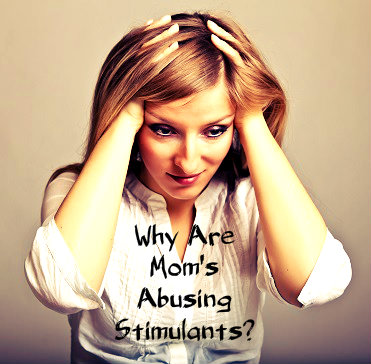 Prescription stimulants are normally used to treat a range of medical conditions, including attention-deficit hyperactivity disorder (ADHD), narcolepsy, and depression. Common stimulant medications include Dexedrine (dextroamphetamine), Adderall (amphetamine and dextroamphetamine), Ritalin (methylphenidate), and Concerta (methylphenidate).
Prescription stimulants are normally used to treat a range of medical conditions, including attention-deficit hyperactivity disorder (ADHD), narcolepsy, and depression. Common stimulant medications include Dexedrine (dextroamphetamine), Adderall (amphetamine and dextroamphetamine), Ritalin (methylphenidate), and Concerta (methylphenidate).
Legitimate Stimulant Use
Chemically, these drugs are similar to natural neurotransmitters within the brain, including norepinephrine and dopamine. When taken to treat a genuine medical condition, a physician will prescribe the medication at a low level and gradually increase it until the drug produces the desired effects. In addition, the stimulant typically comes in a capsule or tablet form that allows for the slow release of the medication into the body. This slow, steady rise in dopamine mimics the body’s natural production. When used as directed by a physician, ADHD medications and other prescription stimulants are not addictive and produce no high.
Stimulant Abuse And Emergency Room Visits
The effect is different when stimulants are abused, however. Instead of capsules or tablets generating a slow, steady rise of dopamine over time, the pills are crushed before being snorted or they are dissolved in water and then injected. This causes a dopamine rise so rapid that it disrupts the brain and produces feelings of euphoria.
Evidence suggests that drug addiction to stimulants is on the rise. For example, emergency room visits involving stimulant abuse skyrocketed between 2005 and 2010. Visits more than tripled for people over age 26 [1].
Why Mom’s Are Abusing Stimulants
The demands placed on mothers in this culture can feel overwhelming. From single moms to homeschooling moms to moms who work outside the home, many feel the pressure of being the master multitasker. Some mothers turn to stimulants in the belief they will help them focus better on their responsibilities or help them make it through a hectic day. It’s important to note that while these prescriptions can increase concentration in those with a medical need for them, there is no clinical evidence that abusing these drugs sharpens focus.
Women also frequently use stimulants to lose weight. For example, Adderall can speed up metabolism and lower appetite, resulting in weight loss. However, it’s not a healthy or permanent weight loss solution. When a woman stops taking the drug, she typically gains the weight back – and sometimes even more.
Dangers Of Stimulant Abuse
Abusing any drug can have a serious impact on a mother’s emotional and physical well-being; however, stimulant abuse is particularly dangerous. When abused, these medications can trigger irregular heartbeat, heart failure, seizures, and dangerously high body temperatures. As mentioned earlier, stimulants also cause decreased appetite, which, in serious cases, can cause malnutrition. In addition, women addicted to high doses often experience episodes of paranoia or hostility. Instead of helping a mother meet the demands of a busy lifestyle, stimulants make it harder to handle normal responsibilities, including caring for children.
There is also added danger in the method some addicts use to get high. When the drug is dissolved in water, some insoluble fillers in the pill may not break down completely. While these solid pieces are small enough to be injected, they are also large enough to block small blood vessels, creating the risk for serious health complications.
Stimulants are also dangerous because they don’t mix well with other substances. The ER study mentioned above showed that 63% of visits involving stimulants included the use of alcohol, painkillers, sleep aids, or anti-anxiety medications [1]. The use of other drugs adds an additional layer of risk to stimulant drug addiction.
Stimulant Drug Addiction Treatment
If you’re addicted to or abusing stimulant prescription drugs, you need drug rehab treatment. Addicts experience psychological withdrawal from chronic stimulant abuse, so the first step will likely be a medically-monitored detox to wean your body from the drugs.
After detoxification, therapy begins. There are several therapies used to treat this addiction, and your rehab team will recommend one or more based on your situation. Cognitive-behavioral therapy (CBT) is often used to examine the negative thoughts, beliefs, behaviors, and emotions that contribute to addiction. Once you better understand how those contribute to your drug addiction, you’ll learn how to positively change those thinking patterns in order to cope in a healthier way. Although considered a short-term type of therapy, CBT involves a gradual process that takes time and effort in order to be effective.
Contingency management is another treatment that may be used for abuse of Adderall and other prescription stimulants. Sometimes called voucher-based reinforcement (VBR), the program provides tangible rewards for positive behaviors and staying drug free. For example, an addict who stays clean for a specified period of time, as verified through urine samples, may earn a voucher for food, movie tickets, or other goods and services that promote drug-free behavior. The value of the voucher starts low and increases the longer the addict stays clean.
Studies of contingency management show that it can reduce stimulant abuse when used as part of a comprehensive treatment strategy [2]. Additionally, one study suggests that, on its own, contingency management may be more effective at treating stimulant use than CBT alone [3].
Treatment for stimulant drug addiction will also likely include support groups. Often based on the 12-step program first developed by Alcoholics Anonymous (AA), self-help groups provide guidance and assistance to recovering addicts. You’ll be able to connect with others going through the same struggles, which may help reduce feelings of hopelessness or isolation. Meetings are free, and you can attend them for as long as needed to help you stay abstinent.
Drug addiction in mothers can lead to serious consequences for herself and her children. Contact a drug rehab treatment facility about getting help for stimulant abuse or addiction. With treatment, it’s possible to stop abusing drugs and start learning healthier ways to live life, no matter how hectic your life may be.
References:
[1] http://www.samhsa.gov/newsroom/advisories/1301241230.aspx
[2] http://www.ncbi.nlm.nih.gov/pubmed/23138961
[3] http://www.ncbi.nlm.nih.gov/pubmed/16445555
12 Nov 2013
Jimmy Choo Co-Founder, Tamara Mellon’s Personal Story On Addiction, Sobriety And Success
It’s easy to fall into the trap of thinking that substance addiction is an endless cycle that determines a person’s future. However, the reality paints a much brighter picture. For many, the act of conquering addiction is only the first step toward a happy and successful life. A recent example of this is the success story of Jimmy Choo founder Tamara Mellon, which illustrates the limitless possibilities of an addict’s life after overcoming addiction.
Tamara Mellon’s Rise From Rock Bottom

Courtesy of: luxsure.com
In her recently published memoir, “In My Shoes,” shoe fashion diva Mellon speaks openly and candidly about her troubled childhood, reckless partying and subsequent substance abuse that ruled much of her early life and career. Mellon was your classic binge drinker who suffered from a cocaine addiction. “One glass of red wine would turn into … calling my coke dealer at 6:00 in the morning” Mellon reports in an NBC Today interview. And as a member of London’s social-elite, Tamara had too-easy access to the club scene that fostered her habits.
Everything shifted in the span of only a couple of days, however, when Mellon was suddenly fired from her job at Vogue magazine and soon after urged by a friend to seek treatment (that moment was the first time, Mellon admits, that she realized that she had a substance abuse problem). The editor’s decision to fire her, Mellon explains, helped set “forces in motion that, in time, would lead to success far beyond anything I could ever have imagined.” Mellon’s recovery is a rocky one, as outlined in her memoir, but she manages to conquer it, a move that led her to develop the influential and extremely successful Jimmy Choo designer shoe label that led her to the top of the fashion industry.
History On Jimmy Choo
Founded in 1996, the J. Choo Limited label has become synonymous with the height of London’s fashion scene. It began as a partnership between Mellon, who focused on developing the brand since leaving rehab, and Jimmy Choo, a shoe designer and cobbler who made his living making shoes for celebrities and royalty, including Princess Diana. With the financial help of her father, Tom Yeardye, Mellon forged a partnership with Choo and launched the shoe line. It’s worth noting that while the line is named after Jimmy Choo, the shoes themselves were made—not designed—by him, but rather designed by Mellon herself and Choo’s niece, Sandra Choi.
Currently, the Jimmy Choo line is considered to be a shoe empire worth just under $1 billion U.S. dollars, with over 100 boutique shops in 32 different countries. The J. Choo Limited designer shoes have made appearances in Hollywood on the red carpet and on screen, including the hit show “Sex and the City.”
Jimmy Choo himself, whom the company is named after, was bought out in spring of 2001 by Equinox Luxury Holdings Ltd. And while Mellon stayed with the company for another decade, she too left in 2011 to start another shoe label, this time under her own name “Tamara Mellon.” Today, J. Choo Limited is operated by chief creative officer Sandra Choi, Jimmy Choo’s niece and former apprentice.
Mellon’s Family Struggle With Alcoholism
As is the case with many people, Mellon’s substance abuse and addiction began at home. Born and reared in London’s upper-class society, Mellon still describes much of her upbringing as “anything but glamorous.” In her memoir, Mellon reports that her mother was a “raging alcoholic,” prone to fits of rage and, like most alcoholics, displayed unpredictable behavior.
The pattern of drug abuse and addiction often runs in families, regardless of their social status, and Mellon is a good example of this. Parents play a central role in their children’s lives, and by extension, their substance addictions do too. In fact, the American Academy of Child and Adolescent Psychiatry (AACAP) reports that children of alcoholics are more than four times as likely to become alcoholics themselves as children of sober parents. Numerous factors play into this, including a greater chance of experiencing neglect or physical abuse (abuse that Mellon experienced firsthand as a young child), and a greater chance of developing emotional problems, including depression, aggression and isolation. In addition, the shame and denial of alcoholism often prevents parents from confronting their children when they begin to abuse drugs themselves.
Like with many of Mellon’s personal and business actions, the publishing of “In My Shoes,” as well as the launch of the Tamara Mellon line, is surrounded by controversy. Some accuse her of sensationalism, while others cast doubt on her ability to build another shoe empire. Mellon however, remains unfazed; after all, she has already faced and conquered the demon of substance addiction—a huge accomplishment on its own. There is no doubt, however, that Mellon’s life is a real success story, and her success and zest for life is due, she says, to overcoming everything that life has thrown at her.
Says Mellon: “I fought my way through the rites of passage.”
A recent study estimates that close to 10% of pregnant women drink alcohol. Given the potential harm that can come to a fetus when exposed to alcohol during development, and the fact that vast majority of females at child bearing age were probably taught this at some point in their lives, this number is truly upsetting. Unfortunately, it’s also not shocking.
Some people still think that alcoholism (or other forms of addiction) is a moral failing rather than a bona fide medical disorder. Sometimes the impulse to drink can be so great that an alcoholic will put the importance of a drink over the safety and well-being of loved ones. It happens all the time with parents of young children, even when there is overwhelming evidence that the parent is a good person and truly loves their kids. Who doesn’t know someone who grew up in an alcoholic household? Is there any reason to think that the simple fact of pregnancy would be able to reign in such a terrible disease?
Condemning Addicted Pregnant Women vs. Helping Them Abstain From Alcohol
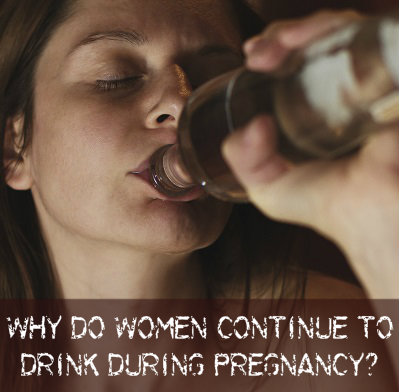 Instead of chastising and condemning pregnant women who drink, we should be devising ways to help them abstain from alcohol during gestation. For hard core alcoholics, it is entirely possible that the only way to stop them from drinking for close to a year would be to physically restrain them. Barring that, however, there are things that we can do to try to reduce the incidence of drinking while pregnant.
Instead of chastising and condemning pregnant women who drink, we should be devising ways to help them abstain from alcohol during gestation. For hard core alcoholics, it is entirely possible that the only way to stop them from drinking for close to a year would be to physically restrain them. Barring that, however, there are things that we can do to try to reduce the incidence of drinking while pregnant.
We, as a society, must be more proactive in teaching people about the risk of fetal alcohol syndrome, a complication that can happen if a mother drinks while pregnant. People born with fetal alcohol syndrome will likely have abnormal faces, growth issues, and problems in the central nervous system. These issues will not improve over time and the neurological impairments can lead to learning disabilities and behavioral issues, like attention deficit disorder. Fetal alcohol syndrome affects up to 3 million people in the US alone.
The problem with teaching about the dangers of fetal alcohol syndrome is that evidence is murky when it comes to determining how much alcohol can safely be consumed before a fetus is put at risk. It used to be, at least prior to the 1980‘s, that doctors never restricted women from drinking alcohol during pregnancy. However, at some point the medical establishment changed its tune and soon no amount of alcohol was permitted during pregnancy. Now, conflicting information can be found everywhere.
How Exactly Does Fetal Alcohol Syndrome Happen?
Babies do not inherit fetal alcohol syndrome. Instead, the ingested alcohol actually damages developing neurons and destroys brain cells. The damage can occur at any point in fetal development, even before the mother knows that she is pregnant. Once the cells have been compromised, there is presently no way to undo the damage.
Educate Teens On Abstaining From Alcohol If Having Sex
Without knowing exactly how much alcohol is safe for fetuses, the only safe option for pregnant women is to avoid drinking altogether. Since drug-related birth defects affect not only the child but society in general, more resources need to be expended to help keep pregnant alcoholics sober during gestation and continually remind women of all ages about the dangers of exposing themselves to toxic substances if there is a chance they could become pregnant. Since alcohol and sex many times go hand in hand, it is a responsible and appropriate discussion to have with kids, especially given how prevalent substance abuse is in some sub-teen populations.
Addiction During Pregnancy – All Of Our Concern
In addition to increasing the amount of materials available to women of child-bearing age regarding the dangers of drinking, medical professionals in all venues need to be more vigilant in identifying mothers who are actively drinking or are at risk of developing a drinking problem during pregnancy. Although alcohol rehab programs have begun offering specialized treatment programs for addicted mothers, the number of available beds is woefully inadequate to handle the sheer number of people requiring treatment. Hopefully governments will begin to see addiction during pregnancy as a public health crises and funnel adequate resources into handling the disease. If someone you know is drinking during pregnancy, encourage them to seek help.
Bipolar disorder is a mental illness that causes significant mood swings. It affects as much as two percent of the population and first manifests primarily in the late teens and early 20s. Although the severity and types of mood can vary dramatically among patients, the most common example of bipolar disorder is a cycling between periods of happiness and sadness, often at extreme levels (i.e. euphoria vs. despair). Although counseling can help patients learn how to identify their distinct moods, as well as the things that trigger each mood swing, many patients will also benefit from some sort of medication to help dampen negative symptoms and neutralize moods.
 It is now pretty obvious that people who are taking prescription medications, including bipolar medications, should refrain from drinking alcohol or using recreational drugs as these substances can negatively interfere with the proper functioning of the medication. In some cases, the prescriptions and other substances can negatively interact to the point of overdose or death.
It is now pretty obvious that people who are taking prescription medications, including bipolar medications, should refrain from drinking alcohol or using recreational drugs as these substances can negatively interfere with the proper functioning of the medication. In some cases, the prescriptions and other substances can negatively interact to the point of overdose or death.
The Importance Of Identifying Signs Of Substance Abuse In Bipolar Patients
Unfortunately, due to the nature of the disease, some bipolar patients are unable to refrain from using alcohol or drugs even when they are taking prescription medication for their illness. In fact, roughly half of all patients with some form of bipolar disorder also have a drug or alcohol problem. Thus, when treating a patient who has bipolar disorder, mental health professionals must be vigilant in identifying signs of substance abuse or alcoholism as the two illnesses tend to go hand in hand.
Scientists have yet to discover a definitive explanation for the high incidence of substance abuse among bipolar patients. In fact, the real explanation likely entails a combination of factors. For instance, genetics may play a pivotal role — a family history of substance abuse plus bipolar disorder increases a person’s risk of having both diseases. Further, bipolar disorder can be a tough illness to treat. Although certain medications have been shown to be successful in alleviating certain bipolar symptoms in many patients, there is currently no cure for the disease and no one magic medication that renders all patients symptom free. As such, many patients use drugs and alcohol as a way to escape the symptoms of or fallout from the disease. This phenomenon is known as “self-medicating” and is often found in patients with the more debilitating mental illnesses, including bipolar disorder.
It turns out that doctors must be especially vigilant when it comes to identifying substance abuse in female bipolar patients. Studies show that females suffering from bipolar disorder are several times more likely to abuse alcohol than men with bipolar disorder. Although men with bipolar disorder also have a higher incidence of alcoholism than men without bipolar disorder, the rate is nowhere near as high as with women.
Factors For Bipolar Disorder
While it could certainly be true that bipolar patients have a higher predisposition to addiction than non-patients, both family history and the fact that bipolar patients tend to self-medicate with drugs and alcohol is more likely the culprit behind such a high rate of alcoholism. Researchers at UCLA conducted a study of roughly two hundred and fifty bipolar patients who were being treated at UCLA on an outpatient basis. The results of the survey showed that the males with alcohol problems were more likely to have a history of alcoholism in their families than males without such alcohol problems.
However, female participants with alcohol problems did not report similar rates of family alcohol problems. Instead, these patients reported co-occurring issues with anxiety and depression. Thus, researchers hypothesized that women bipolar patients were more likely to self-medicate than their male counterparts. Unfortunately, research also suggests that women are less likely to seek help for drinking problems than men. This puts female bipolar patients at high risk not only for alcoholism, but for untreated alcoholism.
Read More About Addiction And Mental Health – There Is Hope!
My story of addiction and recovery is the story of a near miss and an incredibly lucky break. Therapists talk about resilience and protective factors (as opposed to risk factors)—well, I had a boatload of risk factors but somehow I was able to muster some reserves, survive and ultimately thrive.
My story begins when I woke up from a blackout and realized that I had been raped. I remember drinking the night before, but I don’t remember anything from about halfway through the night until the next morning. The other people at the party helped me piece it together—what they saw and heard plus what I felt and what it all added up to. I was 13 years old and was already drinking myself into blackouts. The boy who raped me said he didn’t remember it either. He was only 14.
Within a year I was raped again, this time by an adult—the father of the child for whom I babysat. He was drunk. He was driving me home from babysitting his infant daughter, and made a wrong turn. I knew what was coming and just braced myself for it. I never told anyone.
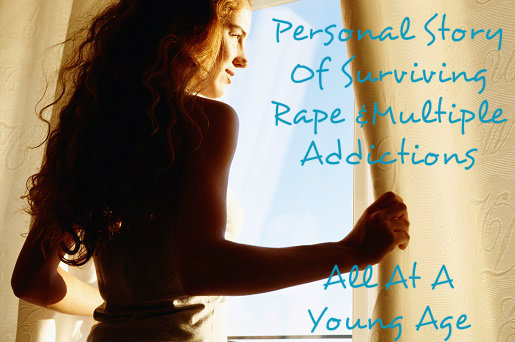
Stopping One Addiction And Dangerously Starting Several Others
I stopped drinking but I didn’t stop trying to drown. I smoked marijuana, ate Quaaludes, black beauties, and pink footballs; I snorted cocaine, and eventually snorted heroin. I dated a dealer, and did anything I was handed, no questions asked. It came to me one day, an epiphany of sorts: I realized that if I continued to live the way I had been living that I would die. I had stopped short of using needles, but snorting coke and heroin wasn’t getting me high anymore. I had to escalate again, or get clean, or face the reality that life as a heroin addict-garbage head was likely going to kill me.
A mental health professional had said to me that women with my history end up either dead or in prostitution. For a 15-year-old, this was a pretty heavy realization. I wanted to talk with my mom about it, but when I asked her to talk with me later that day, she said no. I pressed her, telling her that I needed her to listen to me. “No,” she said, “I can’t listen to you.”
Pain, Molestation And Addiction At A Young Age
So maybe my story doesn’t begin at age 13 in a blackout after all. If by age 15 my mom couldn’t tolerate listening to me, obviously a whole lot more was going on and had been for some time. I started drinking when I was 12. I wasn’t the only seventh-grader who was drinking, but I was likely the only one who was drinking to deal with flashbacks.
Backing up another year, things had happened that I still struggle to name. Rape is too simple and it conjures up the wrong set of images. Incest is too familial and can’t capture the way it feels when it is your teacher. Yes, my teacher, my sixth-grade teacher.
There aren’t words for what he did; there are sentences. He was a pedophile, and he groomed me for months, setting me up to be in a position where I wouldn’t say no and I wouldn’t tell anyone. He betrayed my trust and he took my childhood at age 11. I loved him and he said he loved me. It was truly confounding. It went on for months, my lies to my mom about where I went after school, my first lies ever to anyone.
It was Lolita, so I’m told—a novel that no matter how wonderfully written it may be, I have never been able to read it. At the end of the school year, he disappeared. Eventually I told a friend, and she told my mom. Police were called, school officials informed. I was interviewed, and then interviewed again by a special police “verifier” to determine whether I was making it all up. I wasn’t.
Choosing Life And Healing In Recovery Over A Life Of Pain And Addiction
After spending the next few years trying to not feel anything, and then choosing to live instead of die, recovery was a very long and difficult road. Not drinking or drugging was relatively easy. Figuring out what to do with all those feelings and how to get my needs met in healthy ways was the real recovery. It took years of therapy, and a passionate will to “be better”—to not only stop trying to kill myself, but to actually enjoy living.
For a while, pursuing some sort of healing was a full-time endeavor. I chased healing and recovery, stalked it, pursued it relentlessly. I was vulnerable to healers of every make and model, and spent money I shouldn’t have spent and time I didn’t have seeking healing.
While I learned a ton and all of it was useful at some level, I think the critical moments were back in my teens when I chose—consciously chose—to live and to live well. I had no idea how I would make that happen, but it was adolescent spunk and contrariness that fueled my strength. Mom won’t listen to me? I’ll show her. In fact, a decent amount of “I’ll show her” propelled me forward through the hardest times. During that critical and vulnerable time, the anger and the desire to show my mom that I would get through this without her help was probably the single biggest protective factor I had going for me.
Reconciliation With Self And Family
Mom and I are reconciled now. We rarely talk about what happened—it is still a sore subject for both of us. Her pain at failing to protect me from a predator is a wound from which she’s had to heal. The rough ride through my teens is something I’ve had to move past—not easy when I was invited to witness teenage years all over again, ringside, as my daughter grew up. Now she is 19 and more whole and healthy than I think I ever have been, and while I can’t take credit, at least I can say with some relief—my past did not infect her.
At some point in my 40s, I stopped chasing down healing. Not that I declared myself finished with that project, but more to the point I realized that no one is ever fully finished. I am back on a level playing field. The challenges that were tossed in my path when I was young no longer haunt me and I am truly happy with my life. I’ve been through a few dark tunnels, and who knows, maybe more will come my way. But for now, for today, I can feel all I feel and deal with whatever comes my way. Life isn’t perfect, but it is good enough.
18 Sep 2013
Prescription Drug Abuse In Women Skyrockets
Deaths among women from prescription pain medications are on a steep incline, according to a recent study by the Centers for Disease Control and Prevention (CDC). The study reported that deaths among women due to prescription painkiller abuse grew five-fold from 1999 to 2000. During the same time period, deaths from prescription painkiller overdoses among men grew by 3 ½ times its previous rate. This report highlights the longstanding problem of widespread abuse of prescription pain drugs among women—a problem that has often been overlooked or minimized.
Drug abuse in general, including abuse of prescription painkillers, is often viewed as a bigger problem for men than for women. While it is true that men do make up a larger percentage of all drug abusers, prescription painkiller abuse has affected women in larger numbers for more than a century. And while there are still more yearly deaths among men from prescription drugs—including prescription painkillers—the rapid spike in deaths among women in recent years means that the gender gap is quickly closing.
Painkiller Abuse In The 19th Century
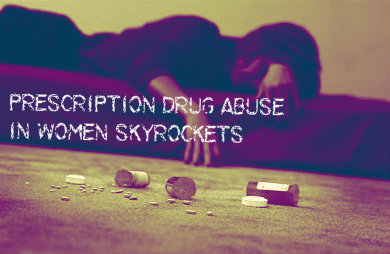 Epidemiological reports from the 19th century estimate that women made up 65 percent to 75 percent of all individuals addicted to opium. This was often the result of self-medication, the use of unregulated “patent” medicines, or irresponsible and inappropriate prescriptions on the part of qualified physicians. In this century, women were often unnecessarily medicated even by qualified professionals due to the prevailing belief of the time that women were fragile and unable to cope with physical pain or emotional distress without assistance. Women were often treated for a vague complaint known as neurasthenia—characterized primarily by fatigue, headaches and irritability—as well as other “disorders” whose existence have now been largely discredited.
Epidemiological reports from the 19th century estimate that women made up 65 percent to 75 percent of all individuals addicted to opium. This was often the result of self-medication, the use of unregulated “patent” medicines, or irresponsible and inappropriate prescriptions on the part of qualified physicians. In this century, women were often unnecessarily medicated even by qualified professionals due to the prevailing belief of the time that women were fragile and unable to cope with physical pain or emotional distress without assistance. Women were often treated for a vague complaint known as neurasthenia—characterized primarily by fatigue, headaches and irritability—as well as other “disorders” whose existence have now been largely discredited.
Modern Drug Use Among Women
As early as the 1960s, studies have shown that women make up the majority of prescription drug users in the United States. This includes painkillers, psychoactive medications and antidepressants.
There are a variety of possible reasons for this gender imbalance. For example, modern studies have provided evidence that women experience more chronic pain than men do, or at least seek treatment for chronic pain more frequently. Women who use prescription medications report many other factors that contributed to their decision to seek treatment for physical or mental distress. These factors often include gender discrimination in work or social settings, the economic and emotional challenges of being the primary caregiver or a single parent, and societal expectations.
Studies have show that when women are prescribed pain medication, they are more likely to be given higher doses and medicated for a longer period of time than their male counterparts. One possible explanation for this phenomenon is that men remain more likely to have jobs involving manual labor with high risk of short-term injuries. In contrast, women are more likely to experience chronic pain when reaching middle age and seek treatment over a long period of time.
With a large and rapidly growing number of women taking prescription painkillers, the odds increase that a certain number of these women will develop physical dependencies. Many prescription pain medications, including Vicodin and morphine, are opioid drugs that are highly addictive.
Equal Opportunity Drug Abuse
Since as early as the 1920s, the overwhelming majority of drug users among men have been from minority populations and economically disadvantaged backgrounds. In contrast, prescription drug abuse among women has always affected a much more varied population, from the wealthy to the working classes. Although white and Native American populations have the highest numbers of deaths from prescription painkillers, the problem is by no means unique to those demographic groups.
While women who abuse prescription painkillers do not come from one predominant economic situation or ethnicity, there is a strong trend apparent when it comes to age. The rate of deaths from prescription painkillers more than tripled among women ages 45 through 54, and also tripled for women ages 55 through 64. In the year 2010, middle-aged women in these age groups made up almost half of the overall deaths among women from drug overdoses.
A study has concluded that for some having an eating disorder could also mean an increased risk for alcohol abuse. The reverse is also true, that certain people with alcohol dependency may face higher chances of developing certain kinds of eating disorders.
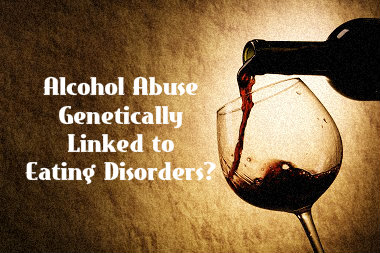 For their study, researchers at the Washington University Medical School in St. Louis took a look at close to 6,000 fraternal and identical twins over age 18. Mental health practitioners and other experts have been aware for some time of a comorbidity between alcohol abuse and eating disorders in women, but this new study indicates that the link holds true for some men as well. The research has tended to focus on women since they’re most often the victims of disordered eating, but men suffer these illnesses as well, including binge eating.
For their study, researchers at the Washington University Medical School in St. Louis took a look at close to 6,000 fraternal and identical twins over age 18. Mental health practitioners and other experts have been aware for some time of a comorbidity between alcohol abuse and eating disorders in women, but this new study indicates that the link holds true for some men as well. The research has tended to focus on women since they’re most often the victims of disordered eating, but men suffer these illnesses as well, including binge eating.
Binge Eating
Binge eating occurs when a person consumes an overabundance of food in a single sitting. This overeating is often done in secret and is followed by feelings of guilt, shame and being out of control. It’s frequently accompanied by purging wherein the person compensates for the large food intake by either causing themselves to vomit or misuse laxatives or diuretics. Experts refer to behaviors like purging as compensatory behaviors. The researchers did not ask men about purging behaviors such as diuretic and laxative abuse, but instead relied upon data from prior male studies. They did ask the women in the study about any potential purging behaviors. Compensatory behaviors like purging are considered closely connected to alcohol abuse behaviors.
Similarities
Following the interviews, statistical methods were employed to calculate estimates for both the influence of environment and the influence of genes. Both eating disorders and alcohol dependency are thought to be a result of a mix of environmental and genetic causes. The statistical method carefully separated the two in order to gauge genetic impact alone. What they found was that the same genes were implicated in both alcohol dependency and binge eating disorders.
Around six percent of the females in the study had problems with alcohol dependency at one time or another during their life. Thirteen percent of them also struggled with binge eating and 14 percent of them also engaged in purging behaviors. More men (25 percent) reported alcohol dependency at some point and 11 percent of them had also engaged in binge eating.
This means that there was a .26 overall statistical correlation between binge eating and alcohol dependency (zero equals no genes in common and one equals every gene in common). For women the correlation was .32. The study team concluded that some of the very same genes which affect alcohol dependency also impact binge eating for both men and women along with compensatory behaviors (purging) in women.
Treatment
There is increased awareness of eating disorders in today’s culture, but diagnoses of anorexia nervosa and bulimia nervosa (a binge and purge eating disorder) continue to be relatively infrequent. When men or women are diagnosed and admitted into treatment, there is rarely any examination into alcohol abuse issues as part of recovery therapy.
Likewise, when men or women enter into alcohol treatment, it is uncommon for staff to inquire or investigate any potential eating disorders. The Washington University study suggests that, given the genetic link between these two illnesses, recovery strategies should target both kinds of compensatory behavior.
The study is scheduled for publication in the September volume of the Journal of Studies on Alcohol and Drugs.
Four days after Lindsay Lohan was released for her latest effort at rehab, and just as her latest film, “The Canyons,” is airing on limited release, the 27-year-old starlet was invited to sit down with Oprah as part of OWN’s Oprah’s Next Chapter series. The Aug. 18, 2013, interview commences before an eight-part docu-series, airing in 2014, in which OWN will follow the actress’ life.
“The Canyons” is a provocative, independent Paul Schrader film—an edgy erotic thriller. While the film is receiving mixed criticism, its star actress is receiving excellent reviews for her role. IndieWire called “The Canyons” one of the “50 Indie Films We Want to See in 2013.” Lohan may be, as Oprah describes her in the interview, “both an adjective and a verb for child-star-gone-wrong” but it cannot be said that the famous young actress lacks talent.
Candid Lohan
What Oprah was hoping for, along with millions of viewers, was a new Lohan—an open and candid one. Dressed in a bright tangerine dress, slick ponytail, and with nude lips and smoky but subtle daytime eyes, Lindsay did not disappoint.
“I’m an addict,” the young actress said with no hesitation.
Multiple Addictions
She explained that her addiction is to alcohol, which had served as a gateway to other things, like cocaine. Lohan told Oprah that she’d used cocaine 10 to 15 times, always snorting it. In the past, she’d claimed to have used cocaine only a few times, but said she was scared then of admitting the truth and being judged. Lohan told Oprah that cocaine was not something she enjoyed—she always felt bad the next day—and that she’d used it because it allowed her to drink more, as well as the fact that, “It was a party thing. People would have it, and I’d do it.”
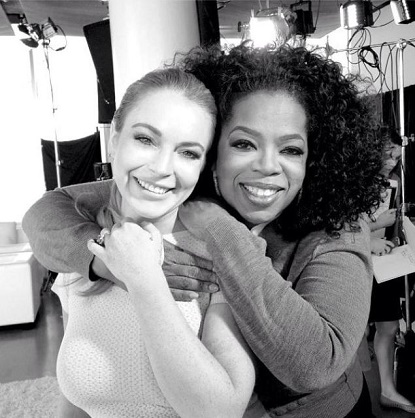
Courtesy of: http://www.nydailynews.com
On the prescription side, Lindsay admitted to having felt reliant on Adderall, and that giving it up might be her biggest challenge. She told the talk show host that she hadn’t used Adderall like many young women and celebrities do to keep weight down or as a stimulant, saying she could eat normally and sleep while using the prescription stimulant. She stated that she had been prescribed Adderall for ADHD and that it had helped her feel “grounded,” but that she is noticing how much calmer she feels without the drug. Lohan explained that she is now learning to feel grounded on her own for the first time, without the assistance of substances.
Fame and Partying at a Young Age
Oprah asked the actress about all the chaos in her life, starting with becoming a star at the age of 12 with the release of “The Parent Trap,” the remake of a 1961 Disney film about twins separated by their parents who find one another and conspire to bring their family back together. When “The Parent Trap” was released, Lohan became instantly famous, and only a handful of movies later, at just 19, she was making $7 million per picture. Paparazzi were following the starlet’s every move and tabloids were busy reporting her partying habits, alleging that her parents were exploiting the young star and even partying with her (even when she was still a minor), revealing her father’s financial misdeeds and habit of landing in jail, as well as her parents’ presumed struggles with addictions.
Crazy Family Events
Lohan told Oprah that no one had been there to guide her and that no one had truly stepped in to help her understand or manage so much money. But she doesn’t blame her parents, not even for the episode in which her father released a screaming telephone tirade between himself, Lindsay and her mother in which Lindsay accused her mother of using cocaine. About the event, Lindsay said she’d come home late from being up too long partying and was behaving in a way she later felt deeply ashamed of. The actress told Oprah that she had lied to her father about her mother using cocaine and had done it simply to hurt her mother.
Chaotic Way
Referring to these former chaotic events and Lohan’s own descriptions of her troubled past, Oprah asked if Lohan didn’t believe she may have been addicted to chaos. She agreed that she was. “I think so. Yeah, it was a comfortable choice to me. What was chaotic to other people on the outside looking in was normal. There is something to be said about me learning to be comfortable with things just being OK.”
Regarding the jail time the young actress was sentenced to for a DUI charge, Lohan admitted that subconsciously, she believes she wanted to go. What she’d needed then was peace from the chaos and ironically, a part of her believed being sent to jail might give her that. She said, “Having all the chaos around me that I was so comfortable with, I somewhere inside knew I wanted to go to jail. And I think that that was subconsciously being put out there just by my actions, or lack thereof.”
New Realization
Lohan’s latest stint in rehab occurred by court order, but she says this time was different, that she is different. Although the judge required that she go, she didn’t fight it like she had in the past. She explained to Oprah that those who worked at Betty Ford and Cliffside Malibu (she spent time in both) must know something she didn’t. She referenced Albert Einstein’s definition of insanity: “Doing the same thing over and over again and expecting different results.” Regarding the judge and the healthcare providers at Betty Ford and Cliffside Malibu, Lindsay said, “I probably need to shut up and listen. You probably do know what’s best because what I’ve been doing hasn’t worked for me in the past.”
During the interview, Lohan referenced her growing spirituality as a source of strength in her life and in her sobriety. She explained, as many recovering people do, that she has no control over the future; she can focus only on today. Regarding what she can try to do to stay well, she said remaining present, clear-headed and focused is most important. While Lohan represents that vanishingly rare breed of young, talented celebrity, privileged with fame and wealth at an early age, she is also perhaps an archetype, the shadow side of celebrity—what happens when beautiful young women are thrust into the spotlight without a hand to guide them or friends and mentors to truly trust. She has been in turn exploited and addicted, though it is too simplistic to say she is either a victim or a villain.
Comparison to Classics
While many consider her a Hollywood punch line, Lohan has the smoky voice and cool, sensual beauty of certain classic ladies of Tinseltown’s epic past. It would be easy for her world to burn up in a flashbulb second like the brilliant, beautiful lives of women who’ve come before her: Judy Garland, Marilyn Monroe, Lani O’Grady or any of the other talented women who died too soon. Although it is never easy to remain forever on the road to health and success, and rarely continuously achieved for recovering addicts, least of all for the newly recovering or for people whose lives are so closely watched and judged, we can hope for the best for this young star. She may have her best work still ahead of her.
The Next Chapter
About her “next chapter,” Lohan told Oprah, “[I’m ready] to get the thing that has made me happiest my whole life back, which is to work really hard, stay focused and prove myself. I have to regain trust in people, in my career, that had doubts, and I fully respect that on their behalf. As long as I stay honest in myself and do the work I’m willing to do and have been willing to do and am doing, then nothing can stand in my way. I am my own worst enemy, and I know that.”


